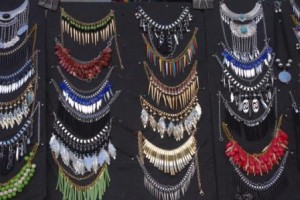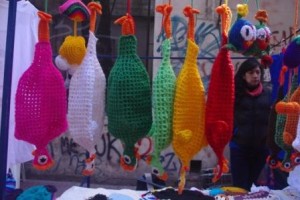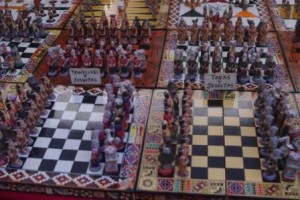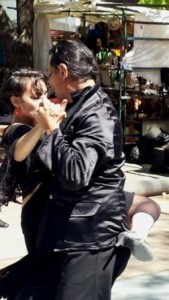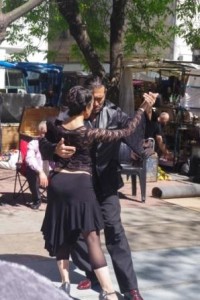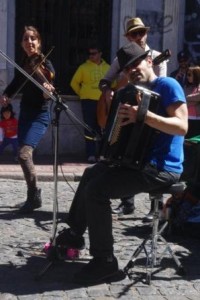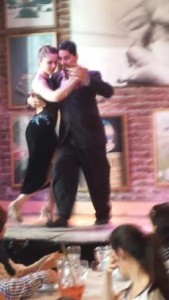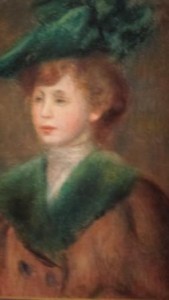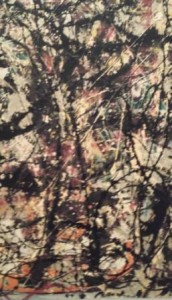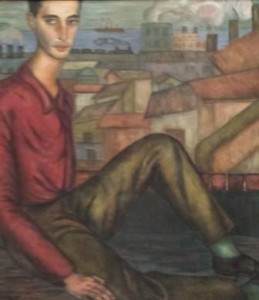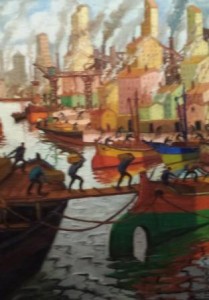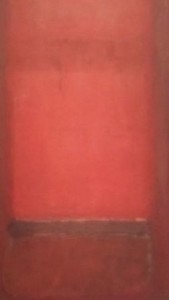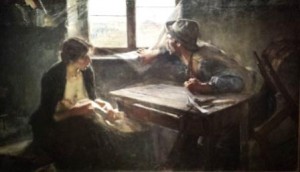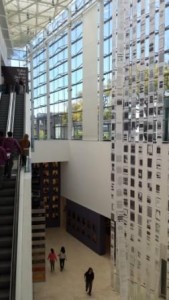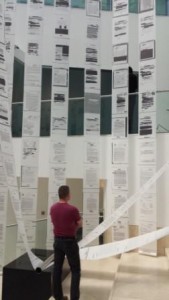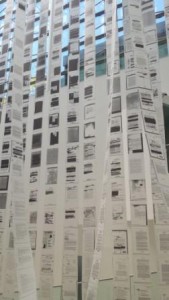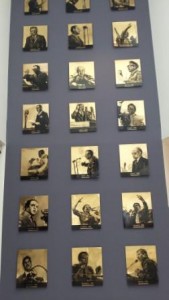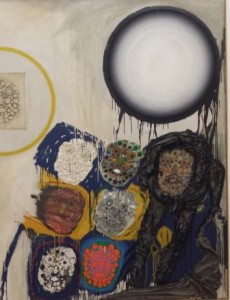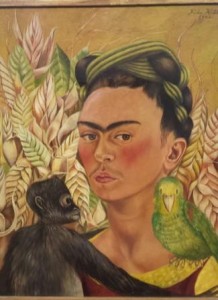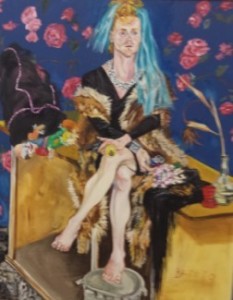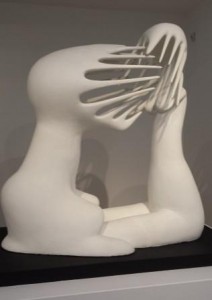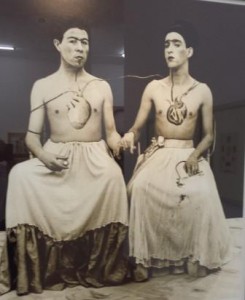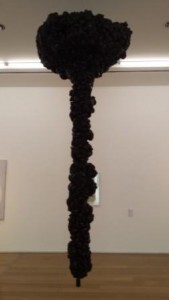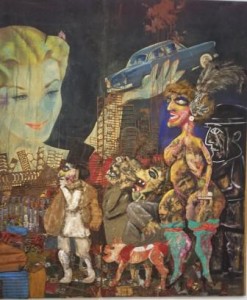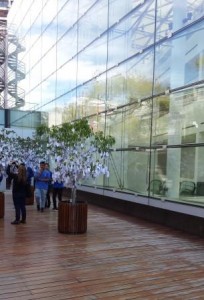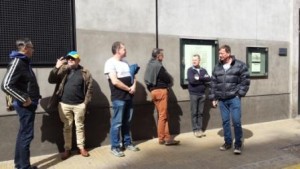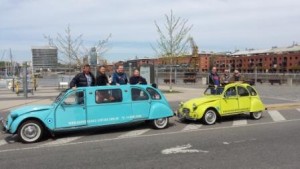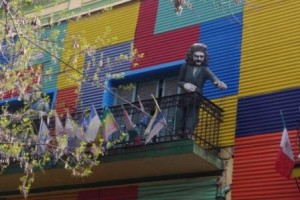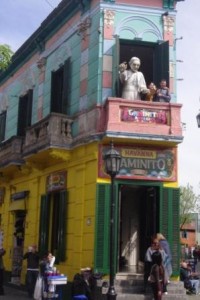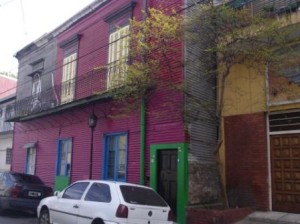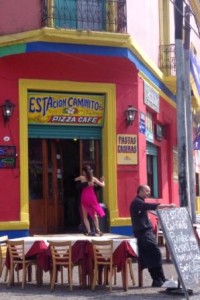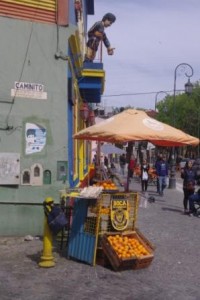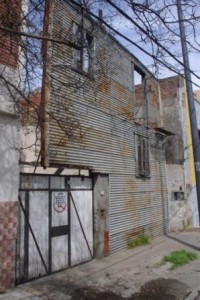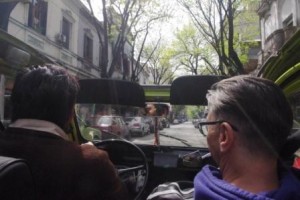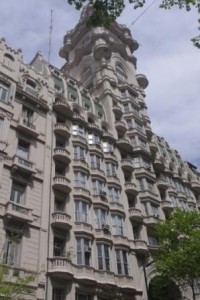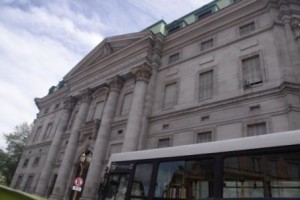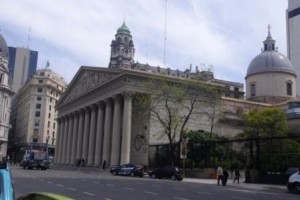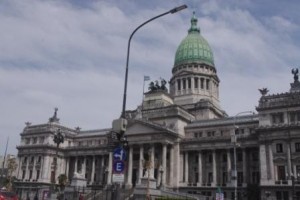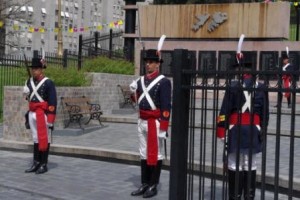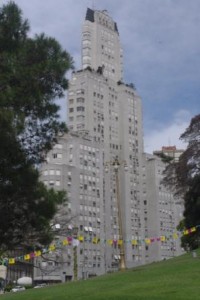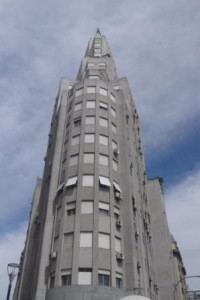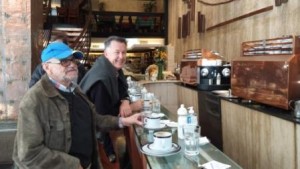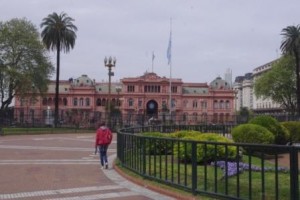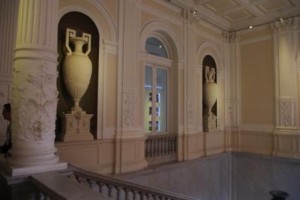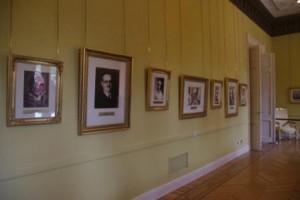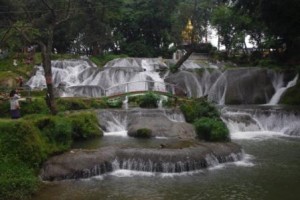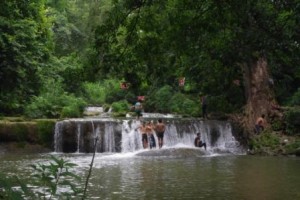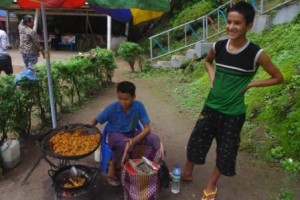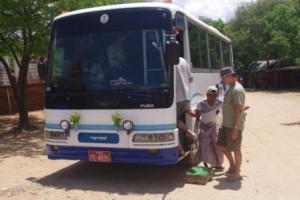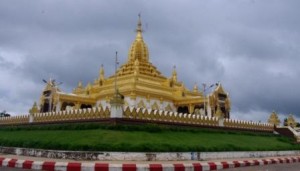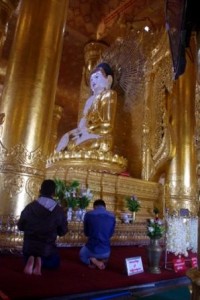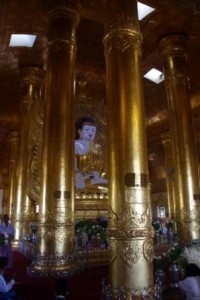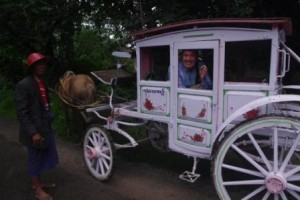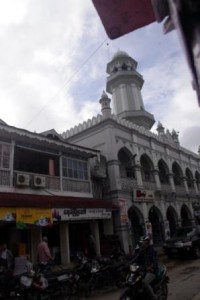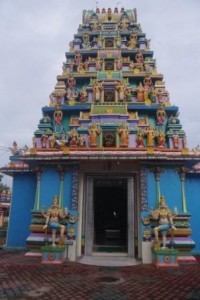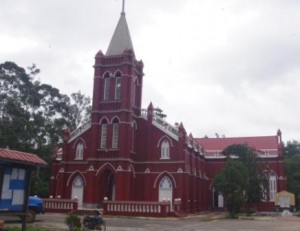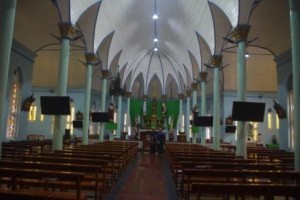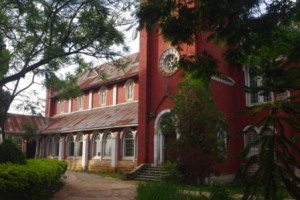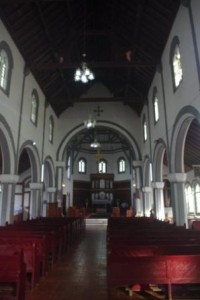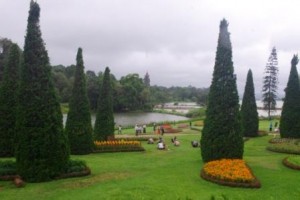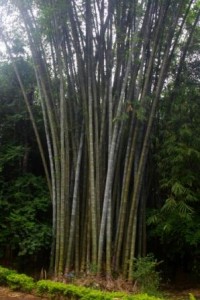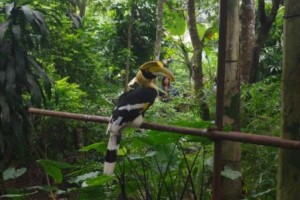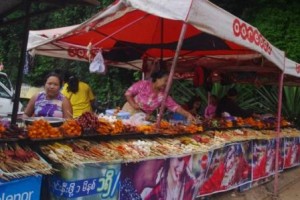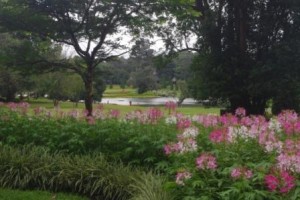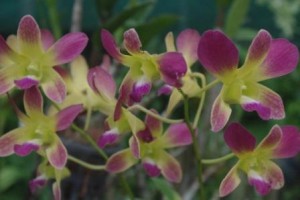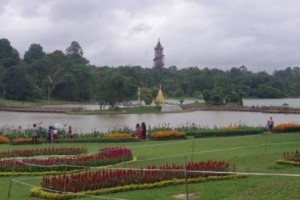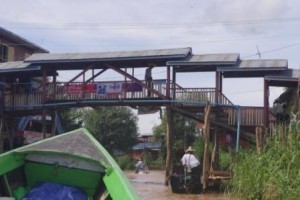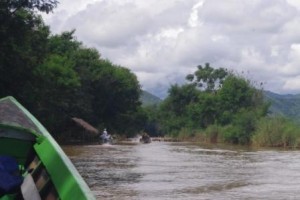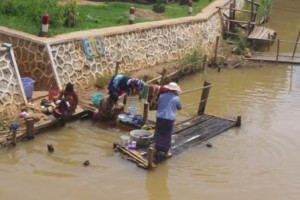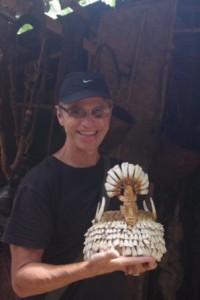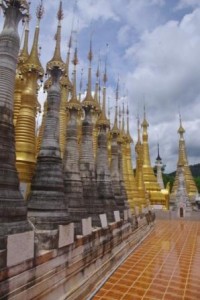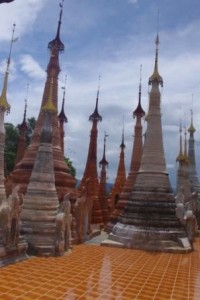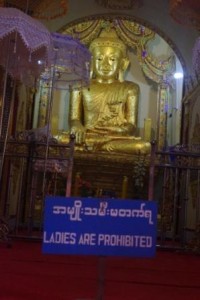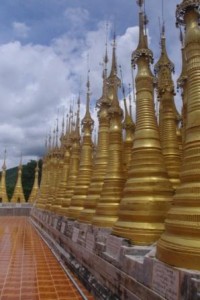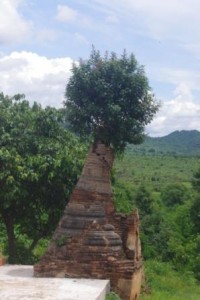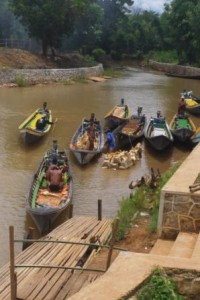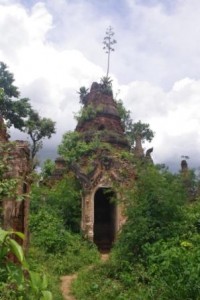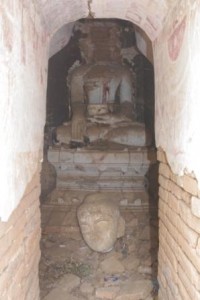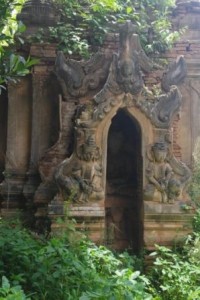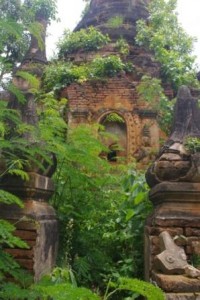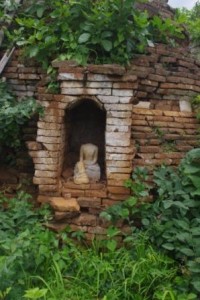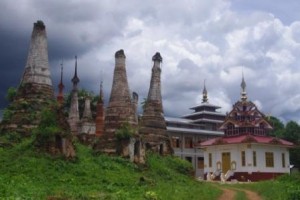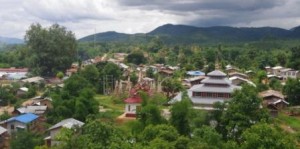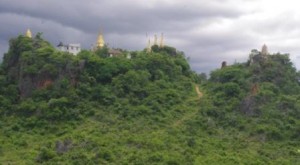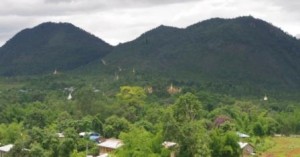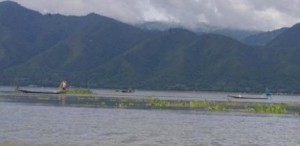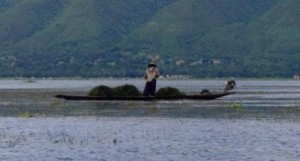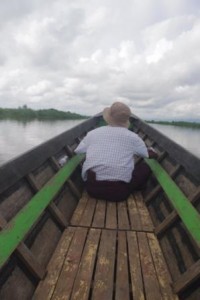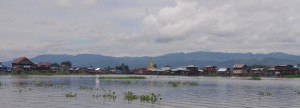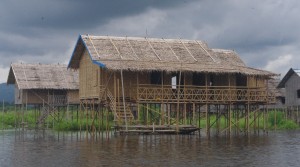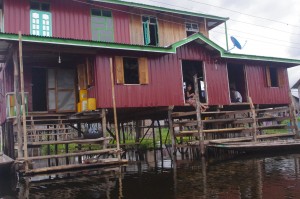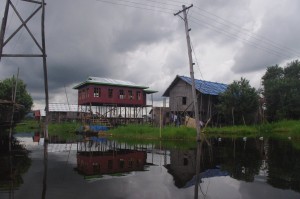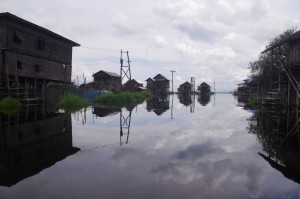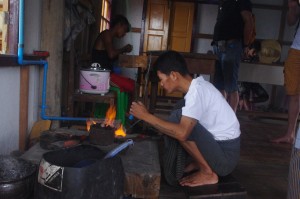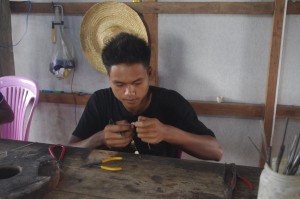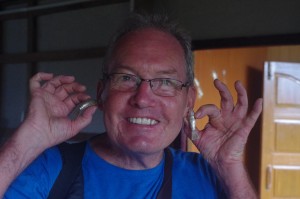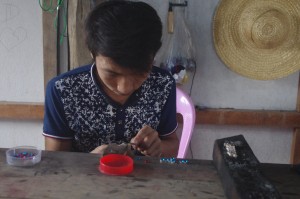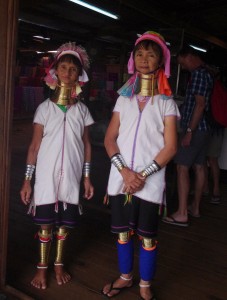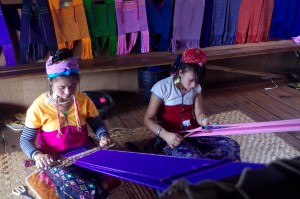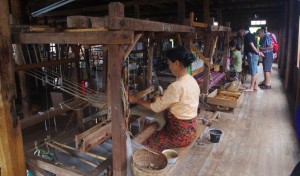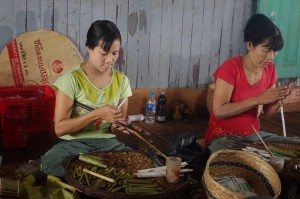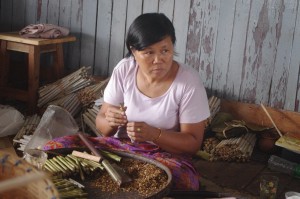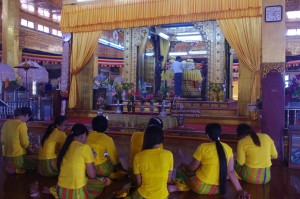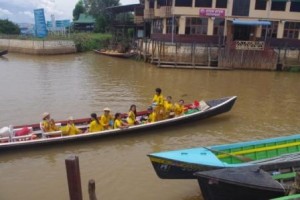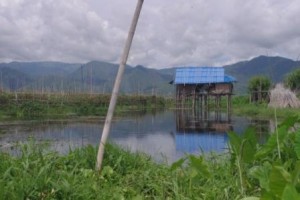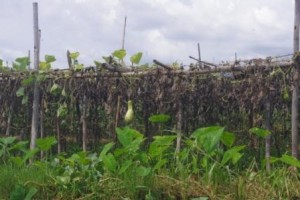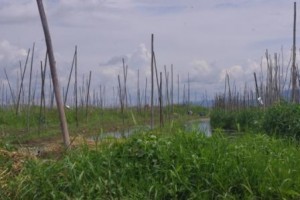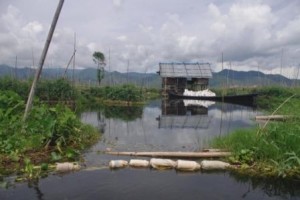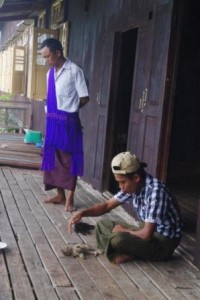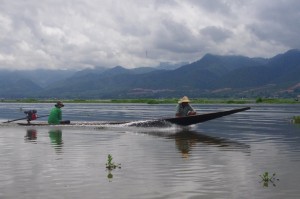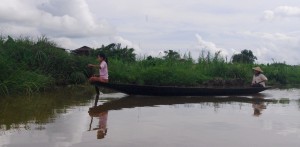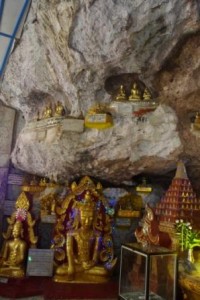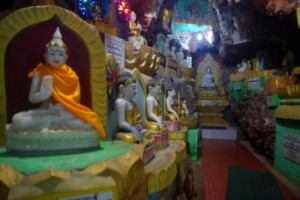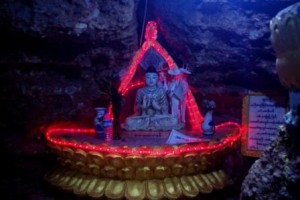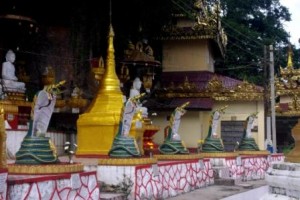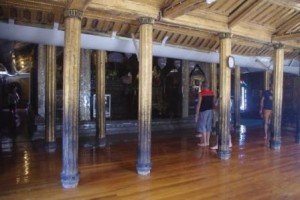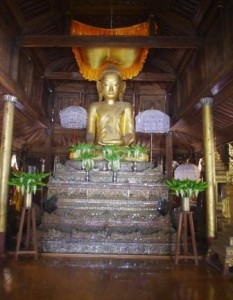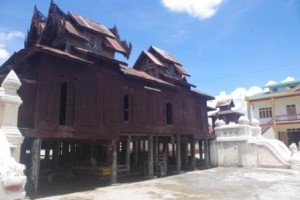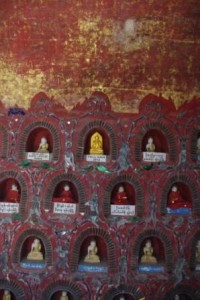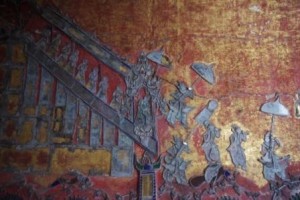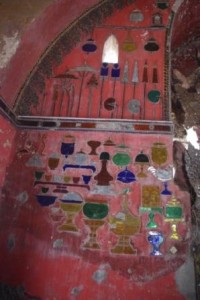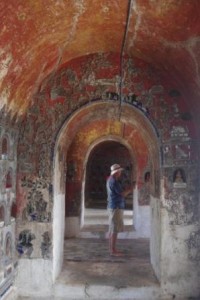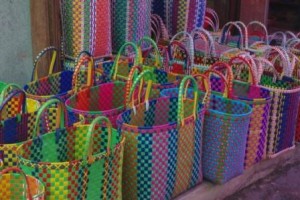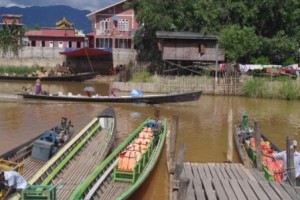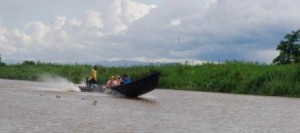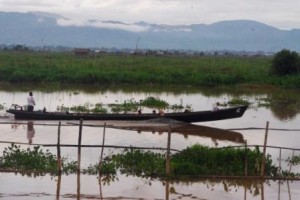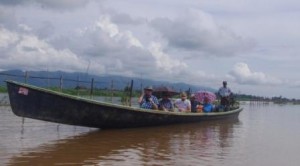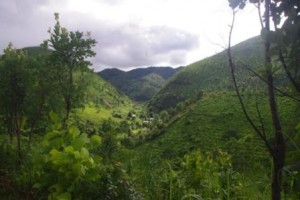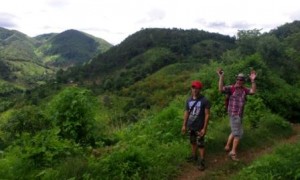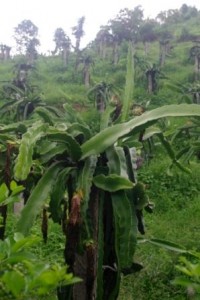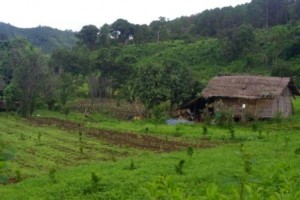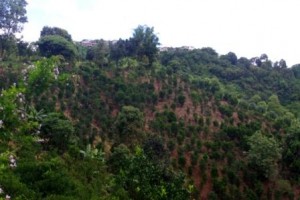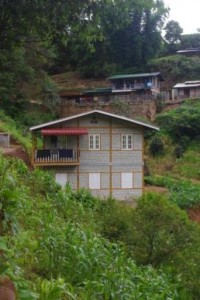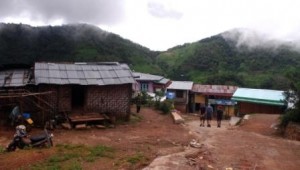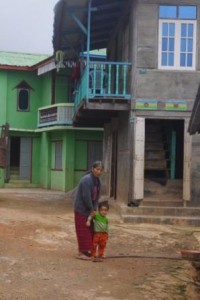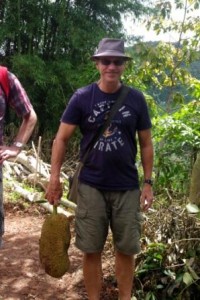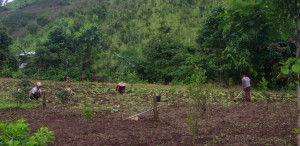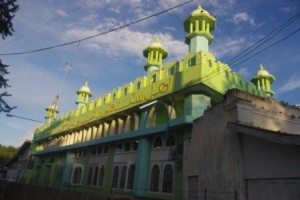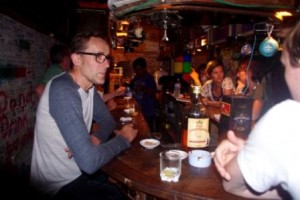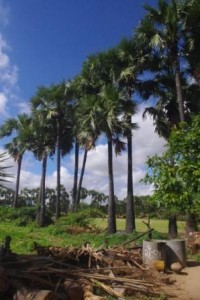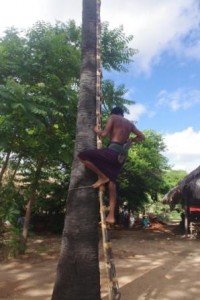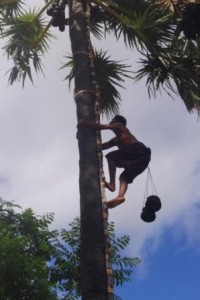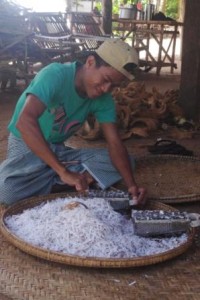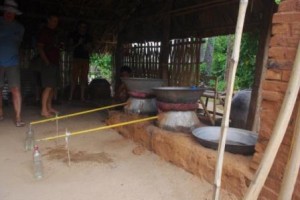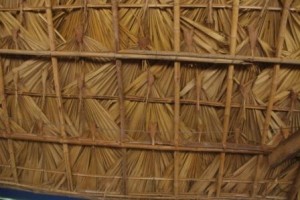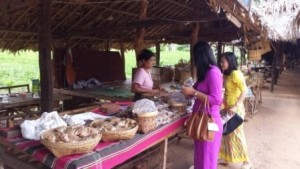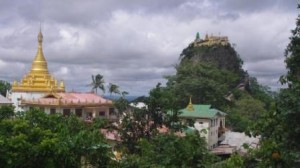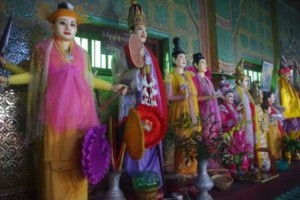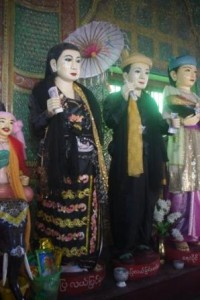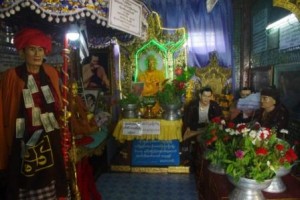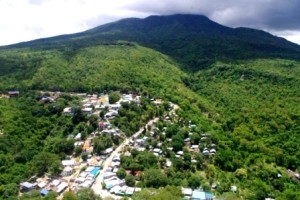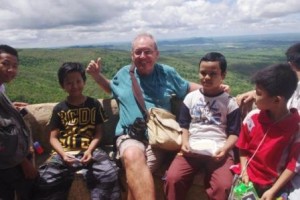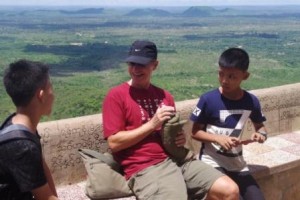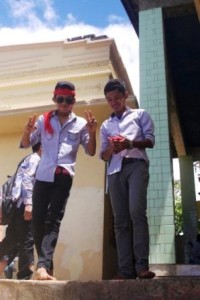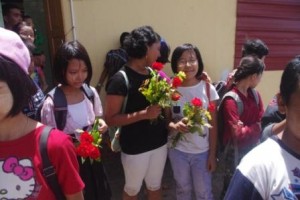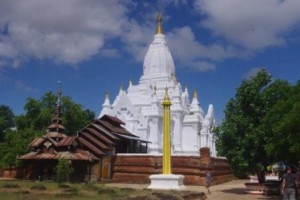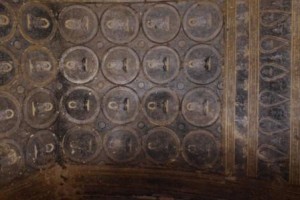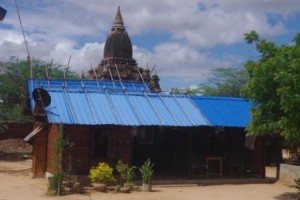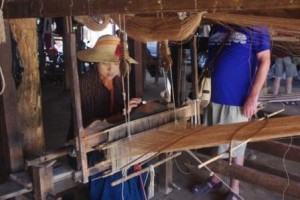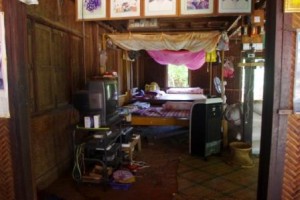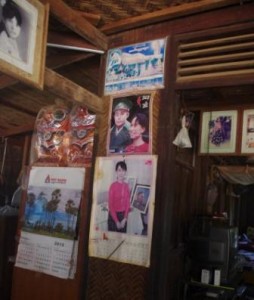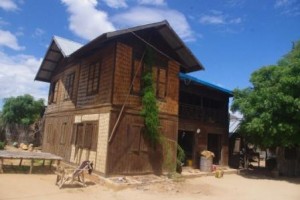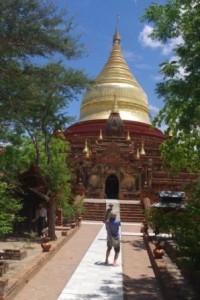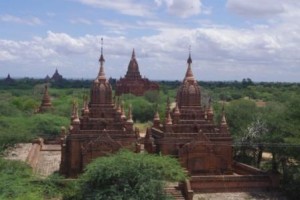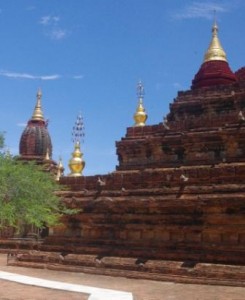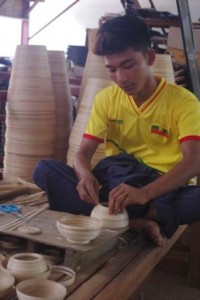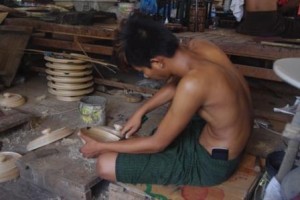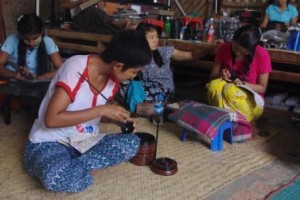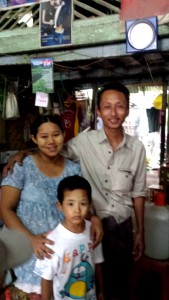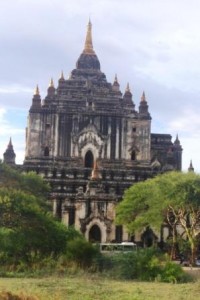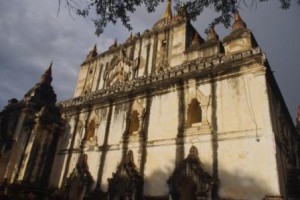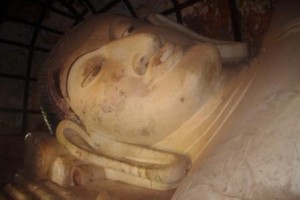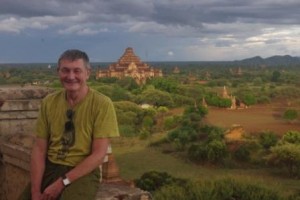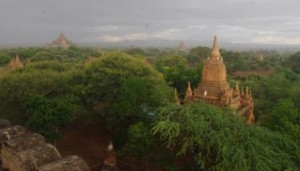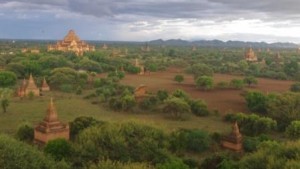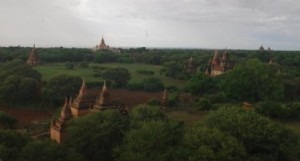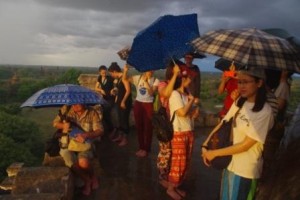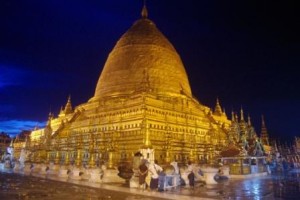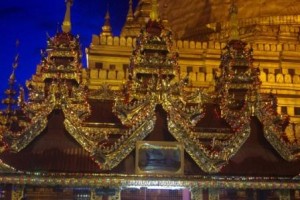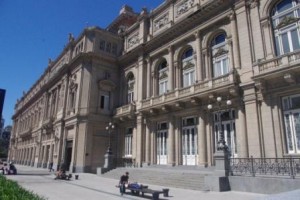
Today we start off walking. Taking in the surroundings as Richard (Don’t call me a Tour Guide) our facilitator says. We then travel on the subway or Subte from Plaza Italia to Ave 9 de Julio. Were booked for a tour of La Colón, the vast early 1900s European-style opera house, built for the wealthy Argentinean farmers as a place to be seen in their finery and jewels. The still-sharp stone exterior seems to extend backwards forever down a side street, suggesting generosity of space from foyer through auditorium, stage, backstage and dressing rooms.
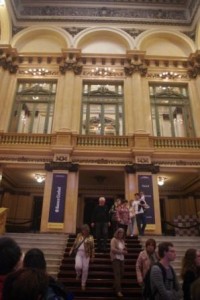
As I suspect, the interior is lavishly decorated with amazing glass ceilings, rococo mouldings and Italian marble just about everywhere. Curved surfaces are feathered to imitate marble and chandeliers dangle ostentatiously at every opportunity though somehow over-kill is narrowly averted. The technical dress-rehearsal for the opening night of Verdis Macbeth is underway in the huge auditorium with just under 2500 seats and room for 1000 standing. Our guide claims that this is greater than the capacity of The Royal Opera House, Covent Garden, but this is not actually true.

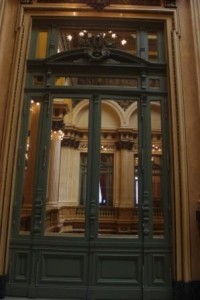
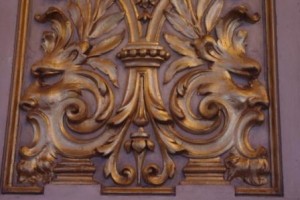
The stage of La Colóm is, however much wider. The auditorium is in darkness so there are no photos but we can see its size and take in the atmosphere of the productions scenery. This is now one of the great opera houses of the world and Richard N has managed to get a ticket for tonight in the upper balcony, behind a pillar its the last cheap one available. Ive seen this opera at ENO, London and as its not one of my favourites so I give it a miss.

Our other culture vultures, Richard I and Robbie try to buy tickets on the day, but only the more expensive seats remain and they are told they have to wear dinner suits. None of them have packed for this eventuality jeans and puffer jackets will just not do in the stalls.
We continue our walking tour, which is really an amble in the direction of Recoleta. We pass official and elegant houses, stopping to have an early lunch at Palacio Balcarce. An ancient oak stair-way takes us up to a grand entrance hall leading to a dark paneled dining room.

The place is deserted as its early for lunch, but the waiter is welcoming and comments not on our grungy clothing jeans, shirt sleeves and tee shirts seem somewhat out of place in such grandeur as we take our places at the large circular table in the centre of the room.
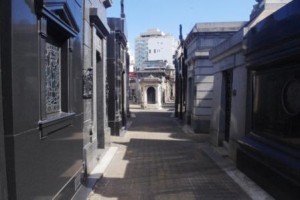
Our next stop is Recoleta Cemetary, a necropolis of tombs for the wealthy and powerful, enabling them to continue their status after death. Statues of the incumbents are often displayed, seated in chairs under cupolas or bronzed in plaques. The modern ones have photographs on mini alters seen through glass windows where the coffins are on display.
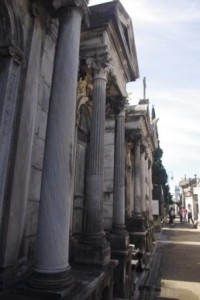


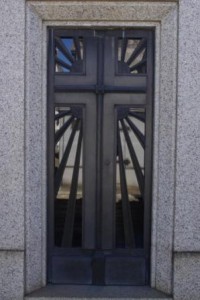
Generally there is a removable grill in the floor through which the coffins can be lowered with a narrow flight of marble steps allowing the descendants to visit or workmen to make repairs. Theres a good range of architectural styles Nouveu, Deco and classical. Im not sure how to describe the popular and forbidding black marble style – Brutalism? Theres only one name sign-posted – the popular
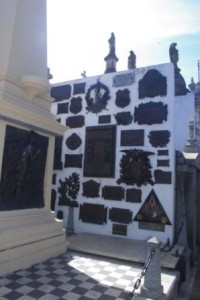
President Sarmiento (see previous post). It looks more like a memorial to me although he apparently designed the tomb himself. Everyone is looking for the tomb of Evita. All the tourist websites have her as the number one attraction here, but the Argentineans dont see her as important. Dr Mike has been here a few days before we arrived and is able to lead us straight to the Duarte family vault. You have to know that this was her maiden name. There are two plaques to look at and foreign visitors are all asking where to find her. They either stumble upon her by chance or get directions from someone who has just been there.
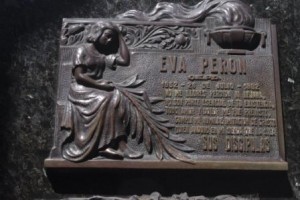

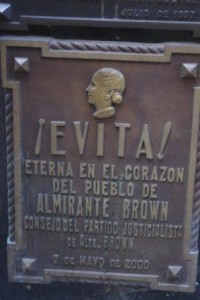
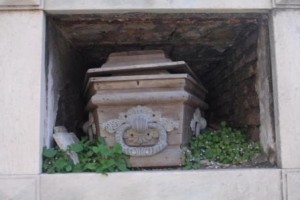

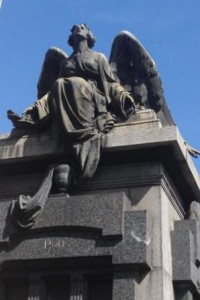
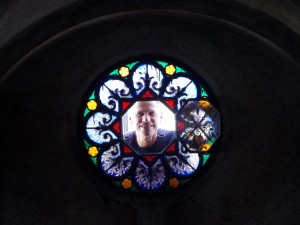
Im searching for Cambio (change) and theres one in the nearby shopping centre on the top floor. Unfortunately all the US dollars Ive brought out today have either a cut along the edge or historic biro marks from bank tellers. Notes have to be pristine so that Argentineans can buy them to store under mattresses for the future. They dont trust the banks as the Peso has fluctuated so violently over the years. Im pissed off, but manage to pay for the group afternoon tea by visa in return for cash from the others.
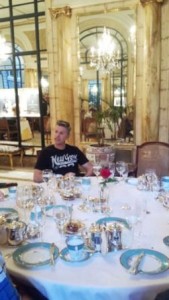
Afternoon tea has been booked at the elegant Alviar Palace Hotel. Its very grand and we are still in our shirts and jeans. Silver plate and Noritake bone china dress the tables I turn over a plate to check. The tea is quite substantial with sandwiches, savouries and tepid scones followed by a choice of cake from the trolley. Theres also a choice of tea I go for Darjeeling without milk, its delicious. We are also favoured by a very cute, if camp, young waiter. He is junior to the very experienced waitress, who really, really, knows how to serve tea. Its the equivalent of a meal – we wont need dinner this evening and the boys are suitably impressed by the pretentiousness of the experience as we rub shoulders with immaculately dressed older women.
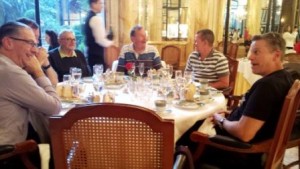
We must cut a strange picture in this place, a collection of highly educated and cultured blokes travelling incognito. We are of course very well behaved. Someone might say that our mothers would be proud of that.
Catching an UBER taxi from the Alvior Palace is interesting as we have to hook up with the hotel wifi. Theres a delicate balance checking the taxi is on its way before leaving the wifi area. We wait in the side street as the UBER taxis are too afraid to draw up to the front – the regular taxis are liable to attack and bash their immaculate and clean cars. Their drivers engage in pleasant and polite conversation – passengers get to rate the drivers on-line and if well-behaved, can get priority service if rated well by the drivers. No money changes hands as this is all done by an on-line credit card transaction. Were headed back to the B&B for a rest before our evening entertainment.

Its UBER time again and while Richard N is going to Macbeth, the rest of us are lowering the tone by opting for The Rocky Horror Show, performed in Spanish. Robbie is not lowering his standards tonight but Richard I has FOMA and condescends to join us. He has to queue at the Maipo Theatre to get a ticket in the same area as us in the Super-Pulman, which turns out to be the front row of the dress circle.
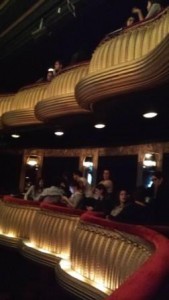

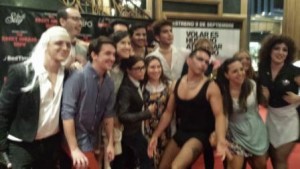
As is the custom, wherever this show is performed, be it theatre or cinema, some of the audience dress as characters in the show. They parade up and down outside and in the foyer, adding to the atmosphere. Were trying to decide if the theatre is Art Deco. The gold-painted scalloped balcony fronts are unusual but the mirrors up the stairs are definitely Deco. Weve got a great view of the stage and it doesnt matter that the show is in Spanish as weve all seen it in English albeit many years ago. The cast are all excellent with great energy far better that the tired version I saw in 1978 in a run-down cinema on the Kings Road, Chelsea, London.

By the reception given to the performer playing Riff Raff, we guess he must be a local pop star. Hes got a great rock voice. The narrator is also famous and seems to be a guest spot – hes a local tv personality. He reads from his script and knows how to handle the crowd , laughing as he fumbles in the text. every mistake is picked up by the vigilant audience who all know the words. Its a great night out and at the end (somewhat re-written and improved) the costumed audience join the cast on stage. UBER is too difficult without wifi so we lower our standard and downgrade to ordinary taxis. The difference is noticeable.
